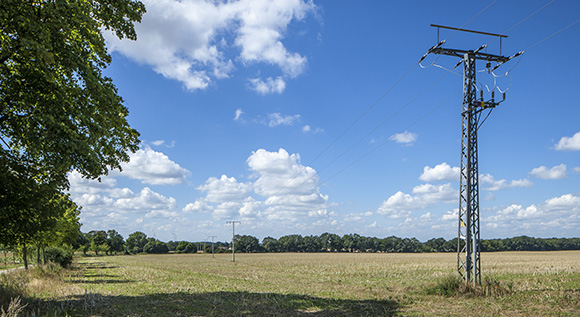Reducing the cost of expanding local distribution grids
Everyone is talking about ‘electricity highways’, but what consequences does the energy transition have for local distribution grids bringing electricity to the homes of final consumers?
 © BMWi / Holger Vonderlind
© BMWi / Holger Vonderlind
In the context of the energy transition, the research project on ‘planning and operating local distribution grids’ (PuBVerteilung) is taking a close look at distribution grids. The findings were astounding, showing that the costs of expanding local grids can be reduced by 90 per cent. Furthermore, the number of new high-voltage distribution grids that are needed in future can be reduced by 75 per cent.
But let’s start from the beginning. What are the different types of grids that exist?
Low voltage, high performance
The big transmission grids are often called ‘electricity highways’ as they transport electricity across long distances and sometimes even across borders. These electricity highways refer to ultra-high voltage grids which, in future, will transport offshore wind energy from coastal regions to the big centres of demand in the west and south of Germany. In order for this electricity to actually arrive in your home, it has to be distributed to final consumers via so-called ‘distribution grids’. These branch off transmission grids – comparable to exits on a highway – and bring electricity into far-flung areas.
There are two types of distribution grids: while medium voltage grids often connect commercial users to the grid – like a road taking you from the highway to a shopping centre – low voltage grids connect private homes – like a street leading to your doorstep.
So far so good. But, due to the expansion of renewable energy, one thing will change. In the future, distribution grids will not only take electricity from the transmission grid and distribute it, but will increasingly feed electricity back in. With the number of wind turbines and roof-mounted PV systems growing, more and more electricity is transported in the opposite direction. And the amounts of electricity we are talking about are significant. Local grids are the ones that have to carry most of decentralised electricity generated by PV systems, wind farms and biogas plants. These grids also have to cope with fluctuating levels of wind and solar power.
In other words, distribution grids face an enormous challenge as our energy transition moves forward and we need to make sure that they are up for it.
Reducing costs by up to 90 per cent
The research project on ‘planning and operating local distribution grids’ (PuBVerteilung) found that, by using new technologies, the costs for expanding the distributions grids can be reduced by more than 90 per cent if we combine measures in an intelligent way. There are four technologies that are particularly promising.
- ‘Regulated distribution transformers’ – just like regular transformers – convert electricity from one voltage to another. However, if the voltage is too high, regular transformers shut down – for example at times when there is a lot of sun and solar power plants feed in a lot of electricity. The new ‘regulated distribution transformers’ can cope with changing voltages to a certain extent.
- ‘Individual power line management’ helps to maintain the voltage within a long transmission line that has many decentralised power stations connected to it – a type of grid which can mostly be found in rural areas. ‘Individual power line management’ can be implemented using transformers with a single coil.
- ‘Static feed-in management’ automatically reduces the output of decentralised power stations connected to the grid to a pre-defined level – no matter how much sun or wind there is. This prevents electricity peaks and makes grid operation more predictable.
- ‘Decentralised grid automation’ refers to the installation of special measuring devices which are installed at key points of the grid to monitor how much electricity is fed in.
A manual on grid expansion
‘PuBVerteilung’ stands for ‘new principles for planning and operating local distribution grids as the backbone of the energy transition’. The research project is being conducted by the Chair of Electricity Supply Technology of Wuppertal University in cooperation with Siemens AG, and grid operators Avacon AG and Mitteldeutsche Netzgesellschaft Strom mbH. The Federal Ministry for Economic Affairs and Energy is funding ‘PuBVerteilung’ with around 650,000 euros over a period of three years.
Next year, the project partners want to publish a planning and operating manual in order to help grid operators plan grid expansion.

